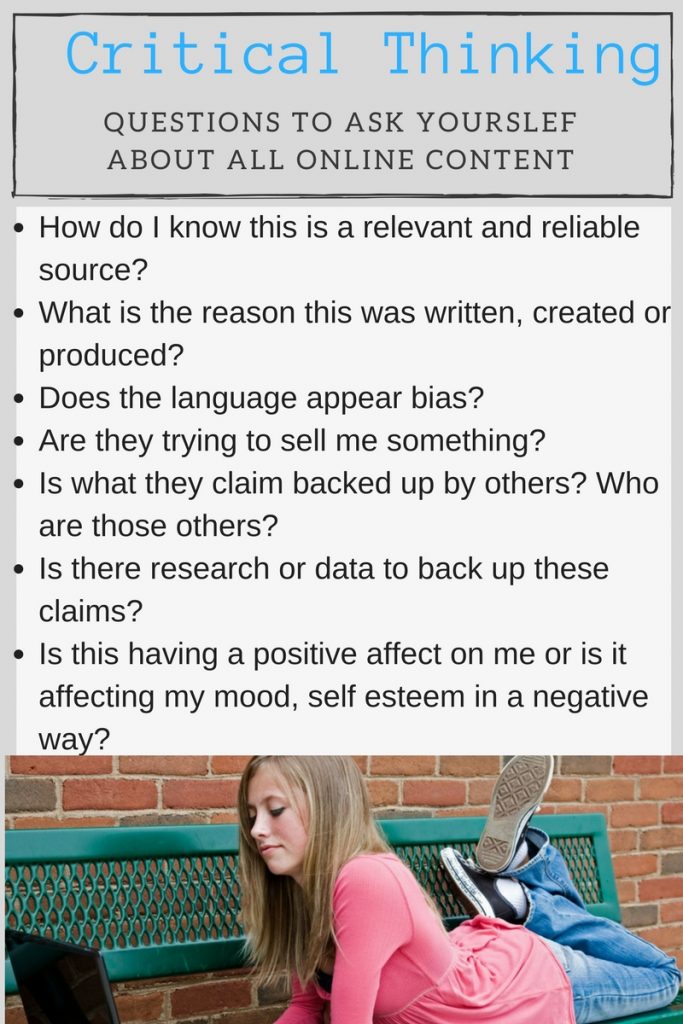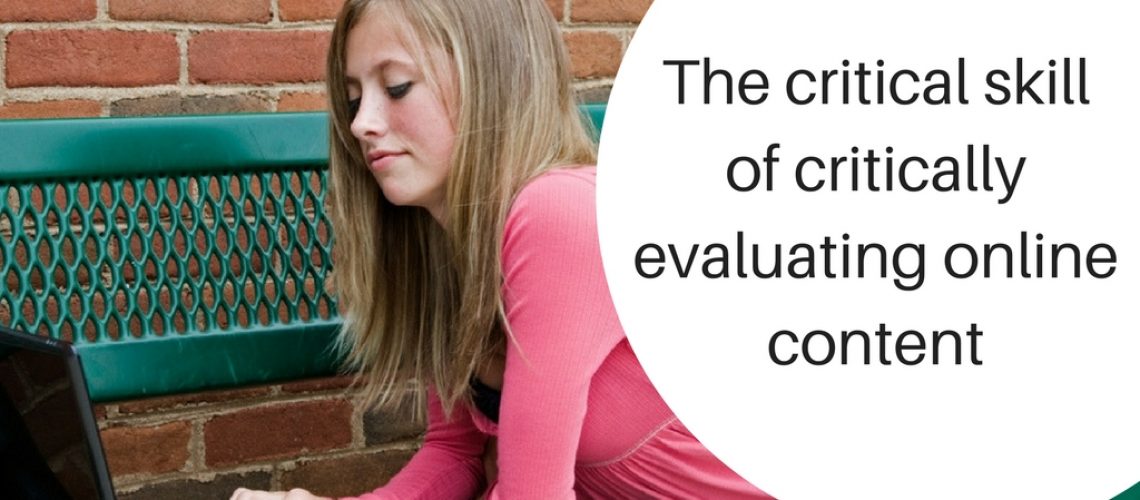Why is it so critical to critically evaluate content online?
Well there is a lot of content online. Yes that is the understatement of the century. Want a snapshot to back that up?
Facebook users watch 8 billion videos per day, snapchat users share over 400 million snaps per day and share 9000 photos per second. Over 7000 tweets are shared every second on Twitter. 1000 photos are shared to Instagram every second. The New York Times publishes around 400 articles a week and 65 blog posts a day.
So that is a lot of articles, videos, photos, opinions, ideas, information that is thrust upon us at any given moment. All of which we have to analyse and evaluate to see if it is something we need to be spending our time on.
And so we need to start being critical of that content.
What is relevant to us? What is helpful? What is true? What is fact? What is opinion? What is bias? What is advertising? What is authentic?
And these are all questions we need to start getting our kids to ask as they become increasingly immersed in searching information for learning, scrolling feeds for connection and social interaction and consuming media for entertainment and enjoyment.
Because there is no one to tell us that something isn’t necessarily true (stats suggest much of the Facebook news prior to the 2016 US Presidential election was fake and thus people may have been making decisions based on untruths).
There is no one to tell us that following this person or this social media feed isn’t going to do our self esteem any good (many social media influencers spend hours to take the best image and filters that help to portray the perfect look).
There is no one to tell us that this is a bias opinion or even advertising? (everyone is trying to sell something or market an idea and so the motives can sometimes be deceiving)
There is no one to say those stats on the meme were made up.
There is no one to tell us this could be dangerous or you need a parent’s consent.
There is no one reminding us of the extraordinary skills of many photoshop users.
So we need to come to these conclusions ourselves. Every time we come across a photo or video, or article or blog post or tweet or meme, we must be able to determine the relevance, the benefits, the accuracy and the importance of consuming that media.
Now this is not always an easy task, even for the most astute of adults. So the lessons and the critical thinking needs to be ongoing and the conversations concerning content need to be frequent. Because kids will get a lot of their news from their social media feeds. This may also go a long way to determining their views and beliefs on certain issues. And we have to be careful that we are seeing the many sides to many different stories too. When we look at the people we follow and the news that we read, it is often very much curated even on our own feeds. We tend to follow the same sorts of people, read the same sorts of articles, follow the same sorts of beliefs, and consequently we can get a much narrower view of the world. The news that I get in my feed can therefore be vastly different to the views another person may get based on the sorts of people they follow and the content they have consumed in the past.
We need therefore to be on the lookout to decide not only if the content is true, relevant and helpful, but is it fair and accurate?
So we need to instil in our kids (and indeed ourselves) a healthy scepticism in our critical thinking. Not a full blown fear of everything we read. Just a little sceptic in that back of our minds that reminds us to check with ourselves whether this is something that is worth investing our time or energy on.
Here are some of the questions we all need to be asking ourselves in order to maintain that healthy scepticism and ensure we are getting the most true, relevant and helpful information and content to consume.


